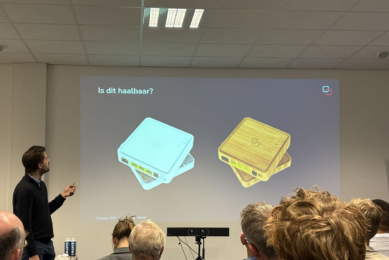Navigating broadband speeds, Wi-Fi generations, and updates can be challenging even for those in the telecom sector. Although Wi-Fi 7 has been available for some time, adoption remains slow. Many ISPs have only recently upgraded to Wi-Fi 6 or still have subscribers using Wi-Fi 5. So, while Wi-Fi 6 might feel “old” to industry insiders, it’s still the reality upgrade for millions of households worldwide.
What generation of Wi-Fi do you have at home? Wi-Fi 5? 6? What’s the difference, and why does it matter? Should you upgrade and how?
These are common questions, especially when your main concern is ensuring smooth internet for streaming, gaming, and working from home without breaking the bank.
Every day Wi-Fi 5
Wi-Fi performance depends on the Wi-Fi generation, the router’s placement, potential wall interference, and competing devices. Most European households use Wi-Fi 5 (or, more technically, 802.11ac), the fifth-generation Wi-Fi standard. What does this mean?

The major drawback of Wi-Fi 5 is its inability to run at its full potential most of the time. The 5 GHz frequency band radio signal weakens faster than 2.4 GHz, limiting the coverage area. To maintain decent coverage, the speed is compromised quite a bit.
Wi-Fi 5 provides fast speeds (theoretically up to 3.4 Gbps) and supports high-definition (HD)/4K streaming (which means the resolution is four times full HD!) and gaming. This is a real benefit if you have a household of gamers and avid streaming users. Because the Wi-Fi 5 standard is based on only a 5 GHz frequency band, there is nearly zero interference from other devices like microwaves and Bluetooth speakers operating in the 2.4 GHz band. Performance is better overall, especially if you have a home with fewer connected devices.
Welcome Wi-Fi 6: faster, better, secure, and more efficient
Wi-Fi 6 (with the techy name 802.11ax) is the sixth-generation Wi-Fi standard and a significant upgrade over Wi-Fi 5. It can reach physical speeds of up to 4.8 Gbps in the 5 GHz (and 9.6 Gbps in the 6 GHz) frequency band. It supports even more connected devices, has more bandwidth efficiency and reduced latency compared to Wi-Fi 5.
The availability and adoption of this standard are gaining momentum, with many new devices and routers now supporting Wi-Fi 6. While Wi-Fi 5 only supports the 5 GHz band, Wi-Fi 6 supports dual bands, both 2.4 GHz and 5 GHz. This is a super benefit for managing bandwidth congestion and greedy apps!

Other Wi-Fi 6 benefits and techy features
- Better overall performance for multiple devices with OFDMA (Orthogonal Frequency Division Multiple Access). Devices with different bandwidth requirements no longer have to wait for their turn to transmit and receive. With OFDMA, the Wi-Fi 6 AP can deliver data simultaneously to multiple devices. This is like a delivery truck that can use a single vehicle to deliver to numerous customers, making it faster than using one truck for each customer. Throw MU-MIMO (Multi-User, Multiple Input Multiple Output) into the equation, and you can compare the solution to a multi-lane highway where multiple cars (devices) drive a four-lane highway – traffic moves faster!
- Saves power: Wi-Fi 6 uses TWT (Target Wake Time), which allows your Wi-Fi device to remain in Power Save mode for an extended period. With TWT, Wi-Fi devices can schedule when they wake up to send or receive data. Power saving improves battery life.
- Lower latency means faster response times when using the internet, which is especially important for gaming, video calls, and smart home devices. Your user experience is smooth, near real-time, and lag-free.
- Greater security: Wi-Fi 6 supports WPA3 (Wi-Fi Protected Access 3) encryption, the latest Wi-Fi security standard, which protects your home network from hackers.
Wi-Fi 6 checklist for your home
Now that you understand what Wi-Fi 6 can deliver, here’s what you need:

- Get a Wi-Fi 6 router. Check if your current router supports it by looking at the label for “Wi-Fi 6” (802.11ax) or “AX.”
- Make sure your broadband plan supports Wi-Fi 6. If your internet is slow, you will miss out on Wi-Fi 6 performance! You need a minimum of 100 Mbps or higher for smooth 4K streaming and gaming.
- Upgrade your devices to Wi-Fi 6-compatible hardware. Older devices may work, but they won’t receive the full benefits of Wi-Fi 6. Wi-Fi 5 and legacy devices can slow down the faster Wi-Fi 6 network. Check your smartphone, laptops, PCs, gaming consoles, streaming, and smart home devices.
- Optimize your Wi–Fi 6 setup at home by placing the router in a central location. Additionally, use Wi-Fi mesh extenders that are not located behind thick walls. This removes Wi-Fi blind spots.
- Activate WPA3 security for stronger security, protection from hackers, and better data encryption between your devices and router.
- Enable Wi-Fi 6 features in your router settings by turning on OFDMA, MU-MIMO, and Target Wake Time and checking for firmware updates.


